German Cuisine
German cuisine is something much more than just Octoberfest dishes. Thanks to big immigrant impact, German cuisine is rich, hearty and diverse.
Today Germans appreciate well-prepared, well-served meals as much as they do a quick bite on the go. This is a country of food markets, beer gardens, wine festivals, food museums and high-end restaurants.
What is the story of German cuisine?
German cuisine often has been perceived as stodgy and fatty.Mostly, due to the lack of variety in the rural German countryside until the last 200 years. Germany has benefited from a close association with Italy and France and adopted many of their spices and cooking methods, yet always with a German twist.
In prehistoric times, German fare was likely bland. Unlike the Mediterranean countries, the growing season limited the people to early forms of wheat, barley, and pasture land for livestock. Sheep, cows, and goats were used for milk, butter, and cheese and occasionally meat products, which were served most often during feasts. The earliest spices in German cuisine were parsley, celery, and dill, which are still used today. The Romans introduced fruit tree cultivation and grapevines. Oats and rye were also added as agricultural methods became more sophisticated. The areas around Cologne were especially rich in fragrant spices and food due to its location and status as a trading city.
German Cuisine Varies by Region
Germany is geographically very rich country (mountains, countryside, and seas) and their proximity to waterways, where transportation and trade historically took place. Old World techniques of food preservation through salting, smoking, curing, or pickling is still a common way of preparing fish, meats, and vegetables. If you look at the popular dishes, you will find ancient cooking methods still in use today.
So: what are German specialties?
- Wurst and Sauerkraut
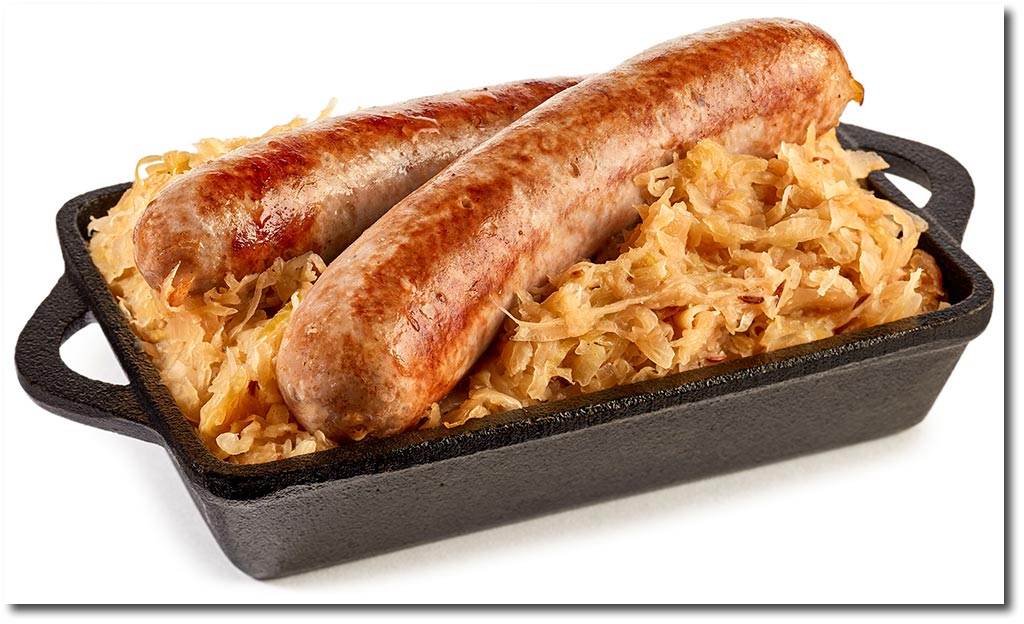
That’s one of the most traditional dinner dishes in Germany. You can easily find it on locals’ tables on a normal day. The wurst can also be called a sausage but prepared a bit differently. It’s made of corned beef, pork, onions, marjoram, and various spices. It can be served both hot or cold. Sauerkraut is a finely sliced cabbage that’s been subjected to lactic-acid fermentation. It’s a very popular “substitute” for classical dinner veggies.
- Traditional German Potato Salad
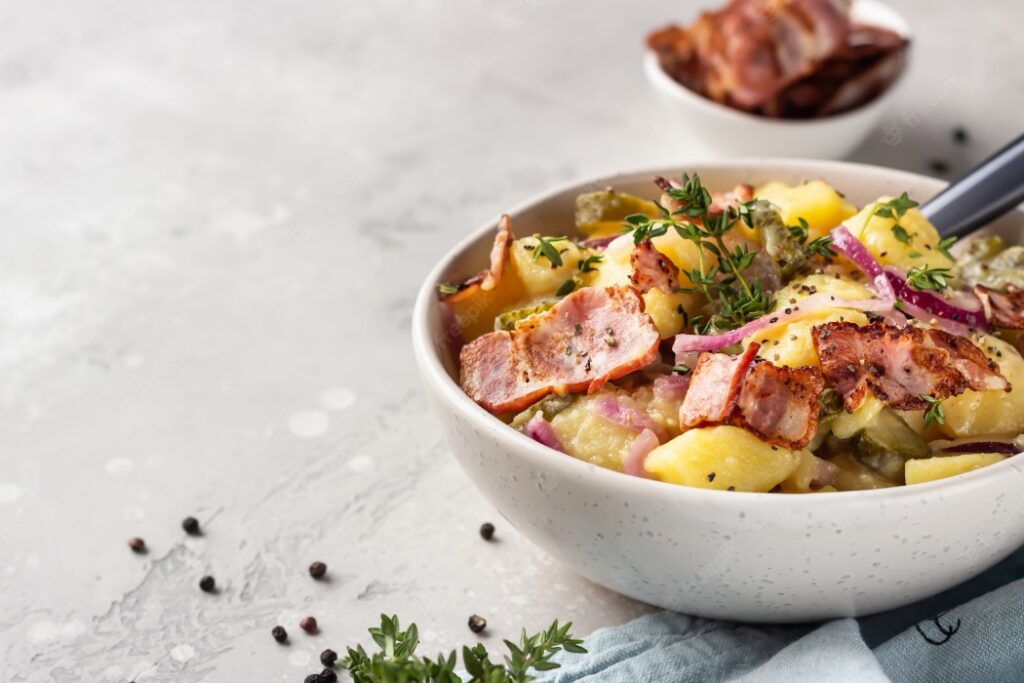
It is made of sliced potatoes that are tossed with bacon, sautéed onions, fresh herbs, and a mustardy white wine dressing. It’s a nice change-up from the classic mayonnaise-based version, and you can serve it warm or chilled.
- Königsberger klopse
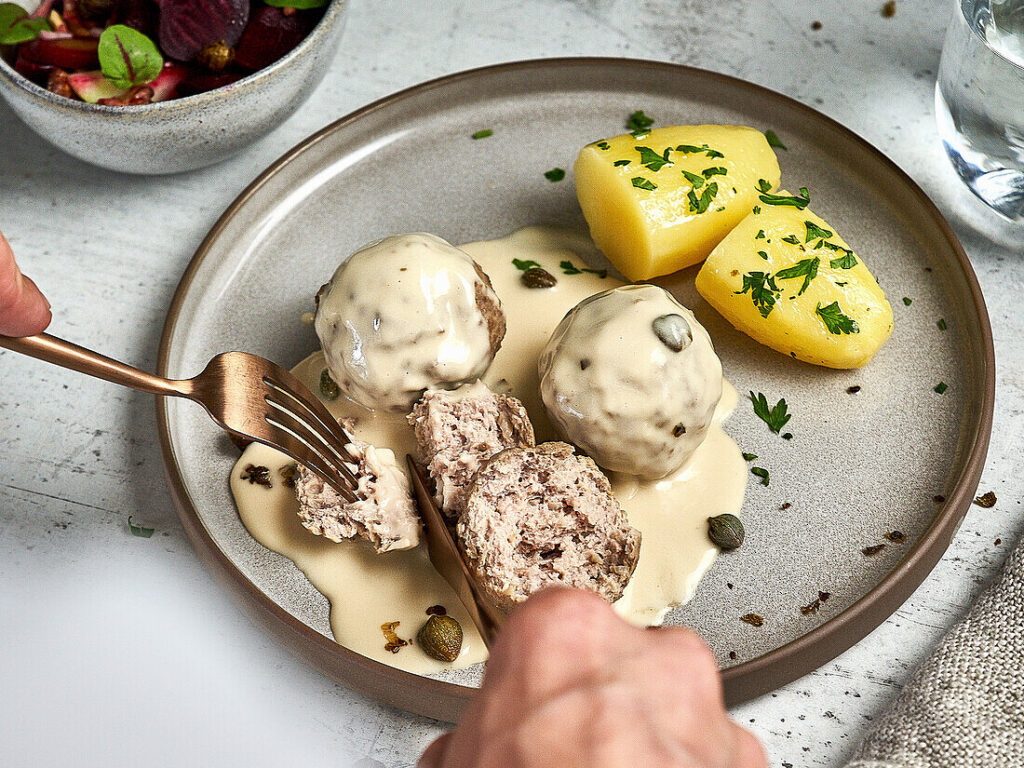
Delicious boiled meatballs in a creamy caper sauce. It’s One of the most popular regional recipes in Germany. Also, the flavor combination capers, anchovies and capers, are not typically German at all. Yet, you can often find it as a dinner dish on a local table.
- Currywurst
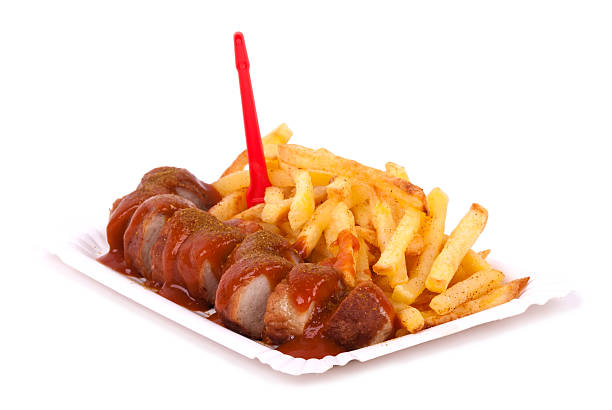
is a fast food dish of German origin consisting of steamed, fried sausage, usually pork (German: Bratwurst), typically cut into bite-sized chunks and seasoned with curry ketchup, a sauce based on spiced ketchup or tomato paste topped with curry powder, or a ready-made ketchup seasoned with curry and other spices. The dish is often served with fries.
17. SchwartzwalderKirsch torte
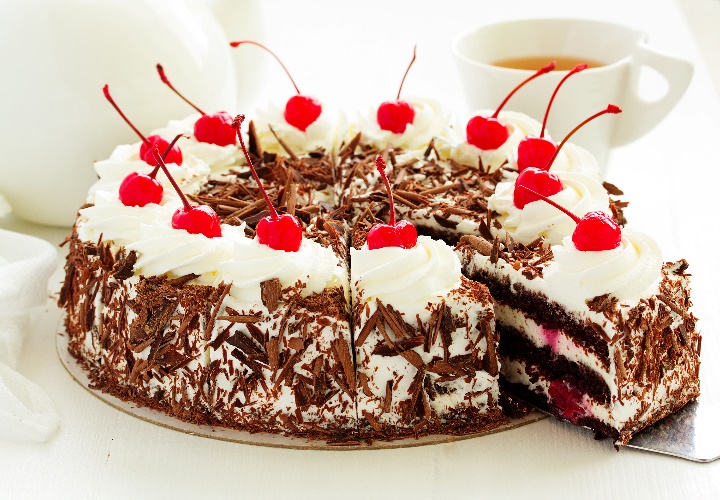
Also known as Black Forest Cake. Consists of several layers of chocolate sponge cake sandwiched with whipped cream and cherries. It is decorated with additional whipped cream, maraschino cherries, and chocolate shavings. In some European traditions, sour cherries are used both between the layers and for decorating the top. Traditionally, kirshwasser, a clear spirit made from sour cherries, is added to the cake. Other spirits are sometimes used, such as rum, which is common in Austrian recipes. German law mandates that any dessert labeled Schwarzwälder Kirschtorte must have kirshwasser.



